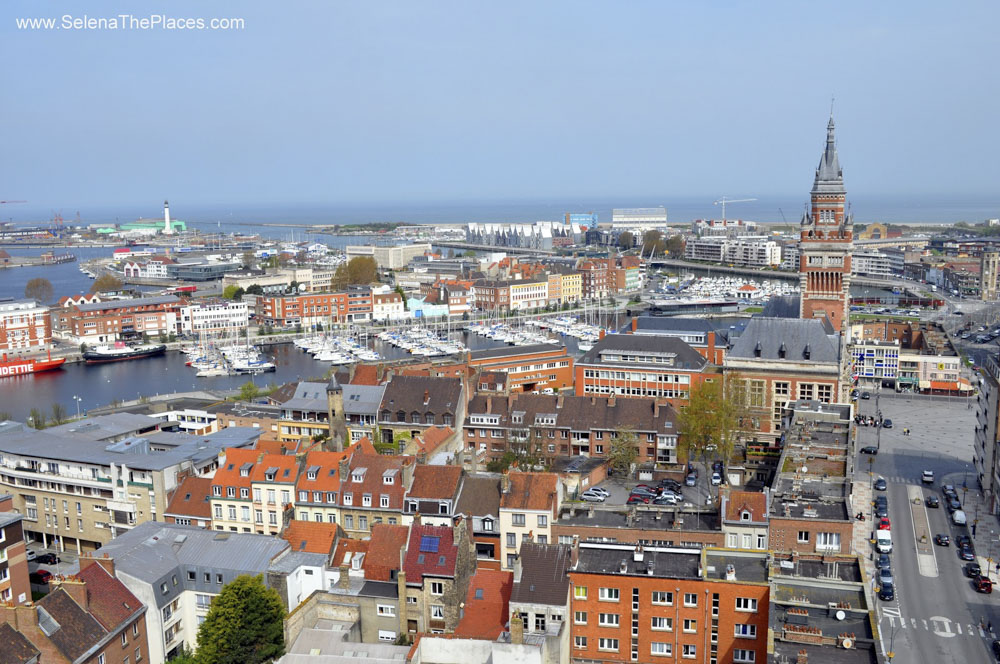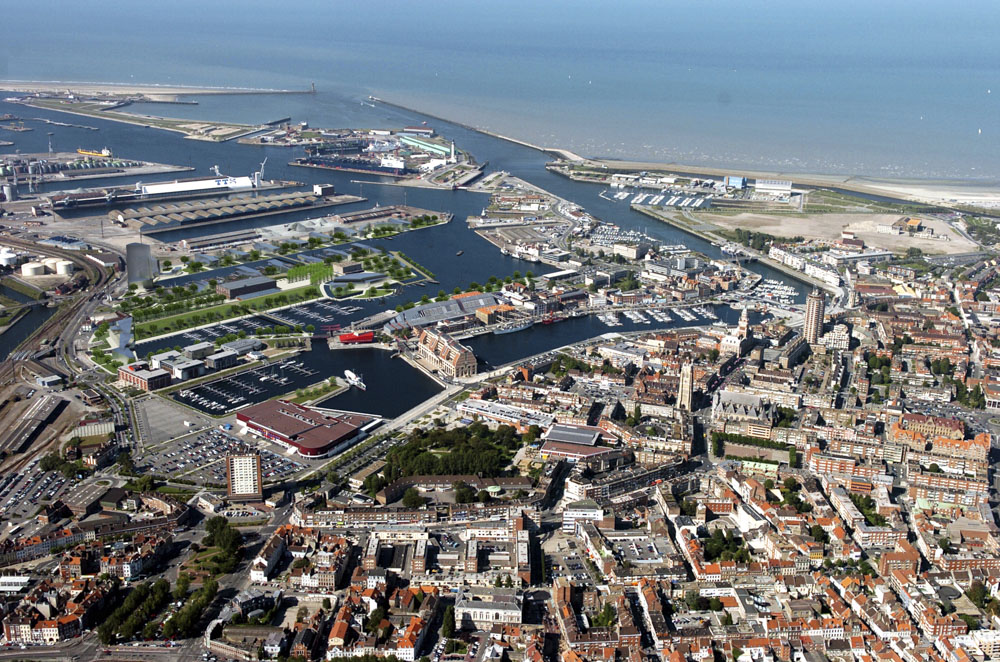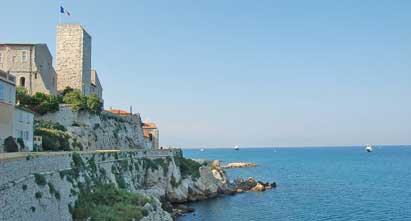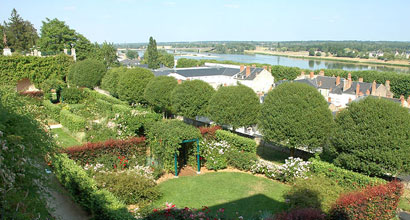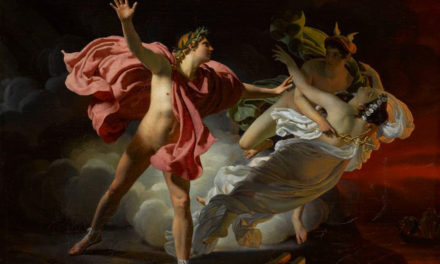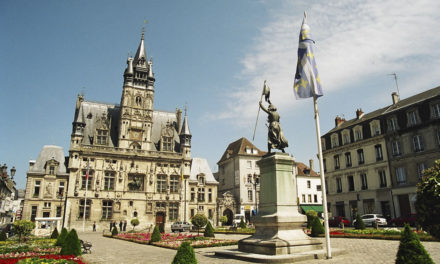Images – Copyright as noted.
Dunkirk (Dunkerque) is a commune in the Nord department, in Northern France. It is the third largest port in France (after Le Havre and Marseilles) and handles heavy industrial cargoes as well being an important ferry terminal for cross-Channel travel from England. Forever remembered for the part it played in World War II with the evacuation of British and allied forces, Dunkirk was almost demolished in 1940 and both the town and its economy had to be rebuilt. With rapid commercial and industrial expansion, Dunkirk today has developed into a busy town with a population of nearly 73,000 enjoying unspoilt beaches, marinas and protected conservation areas. Located only 10 kilometres from the Belgian border, the name Dunkirk derives from the Flemish words ‘dun’ (dune) and ‘kerke’ (church) and simply means ‘the church on the dunes’.
Hotels in Dunkirk
History
With its strategic location at the point where the North Sea narrows to the Channel, Dunkirk’s history has been marked by rivalry between the British, the Dutch and the Spanish ports over many centuries. However, from the late 17th century, it has remained in French hands.
The port started out as a centre for herring fishing under the Counts of Flanders in the 11th century but by 1350, increased commercial activity with Holland and England made Dunkirk a more important proposition for trade. By the 16th century merchant seamen took to the seas and engaged in ‘privateering’ attacking the Normans, the people of Dieppe, the fishermen of Fécamp and Tréport and the English. The Spanish domination of Dunkirk ended in 1658 when the French and English allies retook the city but Louis XIV had another 4 years to wait until he purchased it permanently from Charles II of England. During this time piracy was rife and huge losses were incurred leaving the city in a vulnerable position. From the mid 18th century Dunkirk enjoyed peace and prosperity and much work was undertaken to restore the quays and docks of the harbour.
At the end of the 19th century, with railway links firmly established, Dunkirk developed its role as an important port and other new businesses started up strengthening local industrial output. In 1914, the first World War saw huge losses of life and many buildings were destroyed with continuous bombardment of the city. During World War II, Dunkirk was occupied for longer than any other city in France with a siege of five years, and 90% of it was razed to the ground with the harbour left littered with wreckage and silt. From 1958 the port and the town itself has seen a programme of expansion and it is now a commercially sound and prosperous destination.
Attractions
The area around Dunkirk has miles of sandy beaches and some incredible dunes. The beach at Malo-Les-Bains is particularly popular in summer for swimming and sunbathing and when the winds are prevalent, wind surfers are much in evidence. Several water sports centres specialise in sailing, sand yachting, catamarans, canoeing and inexpensive tuition is available on the beaches of Gravelines and Dunkirk. A stunning golf course at Golfe de Dunkerque Grand Littoral has been recently re-landscaped to provide a 27 hole course inspired by Dunkirk’s 17th century fortifications. Driving off artillery towers and bastions and navigating water hazards make for an unforgettable golfing experience. For those who enjoy walking and trekking, there are 600 hectares of protected dunes along the sea between Dunkirk and the Belgian border. Cycling is a favourite way to explore the coastline and maps and trail guides are available from the Tourist Information Centres.
At the entrance to the town, near the Porte aux Boules monument, Vauban Promenade is located by the pier and visitors can hire rowing boats, electric boats, water bikes or choose a tour with commentary onboard a passenger boat which will give you a fascinating and educational one-hour cruise around the port.
The medieval Belfry, which now houses the Tourist Office, is a unique free-standing edifice 190 ft high dating back to 1440. It was originally built by the Bishop of Cambrai as a beacon for the community and has a peal of 48 bells. At its base there is a cenotaph dedicated to the memory of the soldiers of the First World War.
The Musée Portuaire Dunkerque housed in a former tobacco warehouse dating from 1850, is a museum of maritime relics which depicts the past and present activities of the port and how it operates. Miniature tall ships, boats and fishing equipment are all on display and there are also historical ships moored outside the museum including the beautiful schooner, Duchesse Anne, built in 1901.
Set in the middle of a sculpture garden, the prestigious LAAC (Lieu d’Art et D’Action Contemporaine) exhibits ceramic architecture and an impressive collection of modern art from the 1950s to the 1980s including works by Arman, César, Eugène Leroy, Andy Warhol etc. This rich collection of Fine Arts includes paintings and sculpture from Flemish, Dutch, French and Italian masters as well as contemporary installations and visual arts. Located in the St. Jean-Baptiste church in nearby Bourbourg, The Chapel of Light (Choeur de Lumière) is well worth a visit to see an exceptional work of art created by the English artist Sir Anthony Caro, the father of modern sculpture.
The Mémorial du Souvenir (Remembrance Memorial) relates the incredible story of the battle of Dunkirk and the evacuation of over 330,000 allied soldiers during Operation Dynamo during World War II. A large collection of photographs, cards and military equipment including uniforms and weapons from both allied and German forces, are a lasting memorial to the sequence of events which took place in 1940. Fort des Dunes was built in 1878-1880 and was key to the defence strategy of Dunkirk and its port at the end of the 19th century. However during the Second World War events took place here that have led this fort to be a site for remembrance for those lost in conflict. There is also a British Memorial garden which was erected in 1957 honouring the soldiers of the British ground forces, next to which is a cemetery were 810 soldiers are buried.
The market on Place Turenne is held on Tuesday mornings and on Sunday mornings the traditional open market is held in the centre of Rosendael.
Accommodation & Restaurants
As a coastal town, Dunkirk offers a selection of seafront brasseries and bars. The cuisine of Dunkirk is closely related to Flemish cuisine and one of the most famous local dishes is Coq à la Bière which is chicken in a creamy sauce made with beer. You will find superb seafood platters, freshly caught ‘fish of the day’ and, of course, the famous Dunkirk mussels which are cooked in a home-made marinière sauce.
L’Estouffade (2 quai de la Ciradelle) is close to the yacht harbour and has an excellent reputation for classic French food with local specialities including an ‘amuse bouche’ with baby crevettes and a traditional apple tart flambéed with Calvados. Good value for money and convenient for town centre shopping. Le Petit Journal at 44 Avenue Mer offers authentic cooking and has a buzzy atmosphere for dining with friends.
Many of the hotels have a view of the sea. Hotel Borel is located on the harbour front within easy walking distance of restaurants and the main part of town. Hotel La Meunerie is located in Tétégham in a former mill house. This 4 star hotel offers a gourmet restaurant and a garden. Only 7m from Dunkirk golf course and with the beaches of Malo les Bains just 10 minutes drive away, this is an excellent hotel offering a warm welcome with traditional French cuisine.
Transport
The town centre is 18km east of the ferry terminal which is about 15 minutes’ drive away. Take the A16 motorway in the direction of Ostend and exit at Junction 33. The Dover to Dunkirk crossing takes approximately two hours.
The Garde de Dunkerque railway station has connections with Calais, Lille, Arras and Paris and several regional destinations in France.

